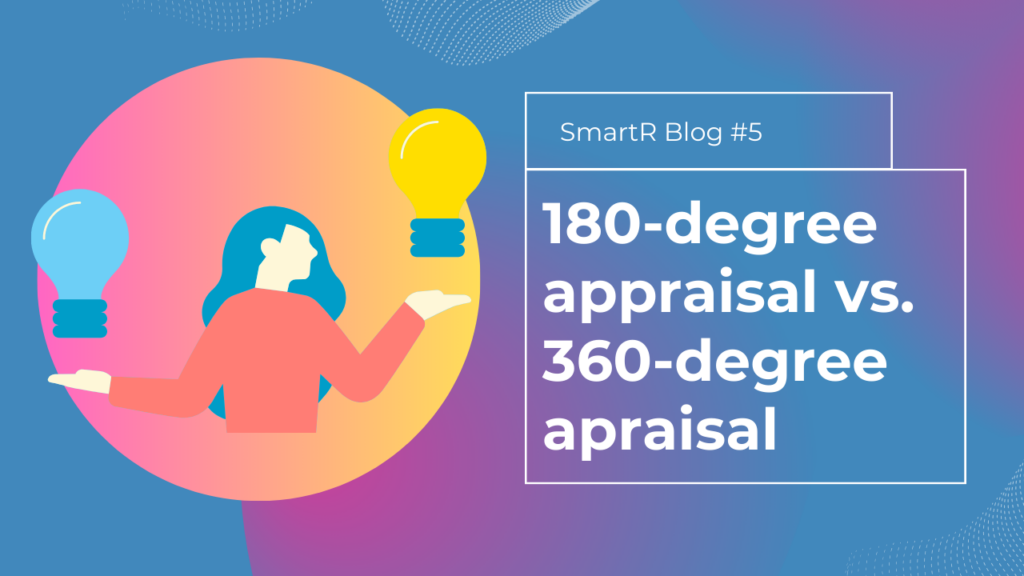Managers and HR departments have long conducted traditional performance reviews. However, evolving technology and shifting business environments are reshaping this practice, expanding participation to include a wider array of contributors such as employees, peers, managers, and customers. Amid these changes, 180-degree and 360-degree appraisals emerge as prominent methods. Let’s delve into their distinctions to aid in selecting the optimal approach for your organization.
> Read our previous article: What is a 360-degree appraisal?
Difference #1: Scope of Feedback
- 360-degree appraisal: This gathers feedback from all structurally associated stakeholders: employees self-rate, managers, peers, and customers. It offers a holistic view of an employee’s performance and behaviors observed through various lenses. This method enhances transparency and trust in evaluations. It works to minimize potential personal biases.
Sign up now to create your 360-degree appraisal campaign on just few clicks

- 180-degree appraisal: This collects feedback from the employee being evaluated and their direct managers. Although less comprehensive than a 360-degree review, it evaluates job performance and aids in improving specific job skills. For instance, it enables new employees to receive direct, expert feedback from their manager, aiding in understanding responsibilities and skill enhancement.

Difference #2: Displaying the Results
- 360-degree appraisal: When using 360-degree appraisal, employees are unable to ascertain who reviewed their job, only viewing the overall result for each group of auditors. Apart from the self-audited result, they gain access to evaluations from peers, direct managers, and customers. This comprehensive feedback aids employees in understanding their genuine capabilities, pinpointing strengths and weaknesses, and enhancing overall productivity. Additionally, it fosters improved communication within the workspace. Moreover, the 360-degree feedback results serve as a robust basis for managers to craft career plans for high-potential employees.
- 180-degree appraisal: Apart from the self-assessed result, employees solely observe the evaluations given by their direct manager or the averaged ratings provided by other superiors.

Difference #3: Capable of Comparative Analysis
- 360-degree appraisal: Allows the company to compare survey results against ideal employee competencies, identifying who meets criteria for promotion or needs further training. For instance, in sales, it evaluates customer feedback, aiding in pinpointing top performers and areas for sales improvement and aiding resource allocation.

- 180-degree appraisal: Focuses on manager and employee self-assessment in 1-on-1 check-ins, highlighting gaps in expectations. This aids employees in understanding improvement areas and surpassing supervisory expectations. For new employees hesitant to discuss challenges with strict managers, a 180-degree evaluation facilitates direct conversations, enabling feedback exchange and easing communication barriers.
Conclusion
Although these two types of employee performance appraisals have many differences, each approach has its strengths that are suitable for different human resources strategy purposes.
- 360-degree appraisal is well-suited for organizations with ample resources, are highly competitive, and are keen on talent and leadership development.
- 180-degree appraisal is ideal for organizations with limited resources and well-defined hierarchies as it focuses on the evaluation of superiors’ employees.
Additionally, the Board of Directors (BOD) and HR Departments should take into account various related factors. These include company culture, finances, and hierarchy. This consideration is crucial when choosing between 360-degree or 180-degree appraisals. The goal is to align these choices with your organization’s human resources strategy.
We hope this blog will provide you with a clear understanding of the differences between 360-degree and 180-degree appraisals. This knowledge will help you make the right people-decision for your company!
